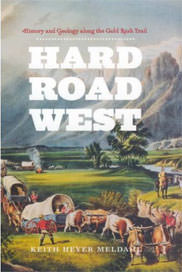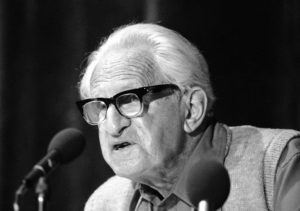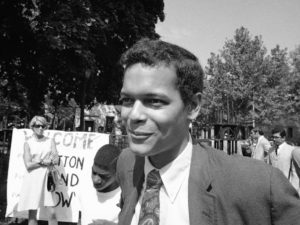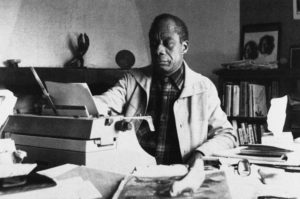John Mack Faragher on the ‘Hard Road West’
One of the most gifted historians of the American West takes a close look at the remarkable tale of triumph and tragedy that Keith Meldahl recounts in his dramatic story of the largest overland migration since the Crusades, as well as the equally compelling epic of the geology of the harsh and sublime Western landscape.
On the morning of Jan. 24, 1848, millwright James Marshall spied a golden flash in the tailrace of the sawmill he was constructing for John Sutter on the American River, about 40 miles above Sutter’s Fort, the site of present-day Sacramento, Calif. “I picked up one or two pieces and examined them attentively,” Marshall later recalled. “Having some general knowledge of minerals, I could not call to mind more than two which in any way resembled this — sulphuret of iron [pyrite], very bright and brittle; and gold, bright, yet malleable. I then tried it between two rocks, and found that it could be beaten into a different shape, but not broken.” Gathering up a handful of nuggets, he went to William Scott, one of his carpenters. “I have found it!” Marshall exclaimed. What? asked Scott. “Gold,” declared Marshall. Scott couldn’t believe it. “Oh! No! That can’t be,” he insisted. “I know it to be nothing else,” Marshall replied. He took his discovery to Sutter, who immersed the nuggets in nitric acid, to no effect. Consulting a copy of the Encyclopedia Americana, Sutter improvised a density test. The nuggets, he concluded, were 23 karat, 99 percent pure gold. Sutter did what he could to keep the discovery secret, fearing the news would make it impossible to hire hands, but it proved impossible. Soon others had found similar deposits in the many streams draining the Sierras. By the late summer of 1848, an estimated 10,000 men were at work in “the diggings.” The Gold Rush had begun. Over the next decade some 200,000 hopeful argonauts made the overland journey to California.
In his fascinating new book, “Hard Road West: History and Geology Along the Gold Rush Trail,” Keith Meldahl, professor of geology at MiraCosta College in California, is concerned not so much with the miners in California as with the “hard road west” they took to get there. Yet he opens his book with the story of Marshall’s discovery, and it’s a telling choice, for it introduces us to the way 19th century Americans interacted with their world. Marshall was no metallurgist, but he had the practical sensibility of a mechanic. The thousands of men and women on the overland trail to California were similarly practical and inquisitive about the formidable landscape they had to traverse. Passing Devil’s Gate in what’s now southern Wyoming, where the Sweetwater River unexpectedly slices straight through a great standing ridge of granite, perplexed overlanders proposed various explanations. Perhaps the ridge, one emigrant noted in his trail diary, “had been rent by an earthquake,” or, as a woman traveler thought, opened “by volcanic force.” Some considered it evidence of divine power. “One stands in awe of Him Who tore asunder the mountains and holds the winds in the hollow of His hands.” But nearly everyone searched for answers. “How I wish I was a geologist,” James Berry Brown scribbled in his journal in 1859, “then the rambles over rocks and hills would be of some benefit to me.” As if on cue, Meldahl seizes the opportunity presented by 19th century curiosity to offer the explanation of 21st century science. The Sweetwater was there first, draining the primeval eastern slope of the Rockies when the mountains were brand new, gradually eroding its way down through thousands of feet of sand and gravel, and finally even through that granite ridge, until it established its present course.
Jet travel, interstate highways and our general expectation of comfort make it difficult for most Americans today to realize just how dauntingly big and rugged the American West is, and how difficult it was to traverse. Meldahl recovers that truth by taking us along as he navigates the whole of the California trail. He escorts us along the valley of the Platte River in Nebraska, up the gradual ascent of the Rockies and over South Pass in Wyoming, across the treacherous calderas of the Snake River plain into Idaho, through the deadly deserts of the Great Basin in Utah and Nevada, and finally up and over the sheer eastern escarpment of California’s Sierra Nevada. The landscape is in many places little changed since 1849. Ancient wagon ruts still visibly scar the mountains and deserts. “The past becomes personal,” Meldahl writes, “when you stand in the old wagon ruts and read what men and women thought and wrote while looking out at the same scenes.” On the way he provides us with samplings from the emigrants, their expressions of awe and wonder as well as frustration and exhaustion, balancing those with his scientific account, which he offers in nonscientific prose.
This approach works not only because Meldahl’s so good at explaining geology, but because he has so many emigrant voices to work with. From the 1840s to the completion of the transcontinental railroad in 1869, at least a quarter-million Americans made the 2,000-mile trek across the continent. Moving at the pace of ox-drawn wagons or pack mules — 12 to 15 miles a day — the journey took them six months or more. They departed from the “jumping-off places” on the Missouri River as soon as spring grass was high enough to support grazing stock, and aimed to make it over the far western mountains before the first winter storms. Everyone knew the fate of the Donner Party of 1846, driven to cannibalism after it was stranded in the High Sierra by an October blizzard. Such tales dissuaded most people from even considering the journey. But for many others the danger was part of the allure. For the gold-seeking argonauts, it was part of what they called “seeing the elephant,” an Americanism that came into wide use with the Gold Rush. It originated in the tale of the Western farmer who hitches his team and drives to town to see the circus, and on the way encounters the parade of exotic animals led by the elephant. The farmer’s terrified horses buck, pitch and overturn the wagon. When the disheveled husband returns home, his wife asks him how he liked the show. “Didn’t get to the circus,” he replies with a crooked smile, “but I’ve seen the elephant!” The flirtation with deadly danger. Thousands of overland travelers wrote of seeing the elephant in letters, diaries or reminiscences. With the exception of the Civil War, no other 19th century event inspired so many personal accounts from Americans.In the many decades since the great overland trek of American pioneers in the mid-19th century, hundreds of writers have been inspired to tell the story. Francis Parkman’s classic “The California and Oregon Trail” became a best-seller in 1849. A century later, A.B. Guthrie’s “The Way West” updated the epic for modern readers. In the past two decades, scholars have produced a new generation of histories, including modern classics such as J.S. Holiday’s “The World Rushed In” (1983) and Malcolm Rohrbaugh’s “Days of Gold” (1997). And in the 21st century the overland trail remains surprisingly familiar to the undergraduates in my course in the history of the American West, thanks to the computer game “The Oregon Trail,” which since its commercial release in 1985 has become the single most successful educational software title. The library at Yale University, where I teach, lists 1,411 titles under the subject heading “Overland Journeys to the Pacific.” “Hard Road West” is No. 1,411, the most recent addition to this crowded field. But it will find its audience because of Keith Meldahl’s original approach and his engaging style.
The human history of westering across the continent, Mehdahl tells us, was guided by the geological history of a continent itself drifting westward. For the past 200 million years, North America has been sliding west a few inches a year, which adds up to several thousand miles. Pushing against the tectonic plates of the Pacific generated the monumental forces that spawned the great North American Cordilleras, the mountain ranges that span the western third of the continent. Alternating processes of compression and expansion of the Earth’s crust produced the hard landscape that confronted the overland emigrants. Colliding plates created the land that would become California, and the maze of faults and fractures that made up the glue line, and hydrothermal expansion filled these gaps with dissolved silica and precious metals. They cooled to form the rich belt of gold-laden quartz, the Mother Lode, that meanders from north to south along the western slope of the Sierra Nevada (a line that can be traced today by following California Highway 49 through the many famous old Gold Rush towns).
Meldahl is skilled at offering understandable explanations of scientific concepts. He writes very well and, in the tradition of the best 19th century accounts, he does not hesitate to put himself in the story. Deep in the desert of Nevada, he drinks from an old well that saved the lives of many an emigrant. “The water tasted of salt and dish soap mixed with algae,” he writes. “It took a whole beer to take the flavor away — and then a second to toast the hapless souls who had to drink the stuff to survive — and then a third to toast the beauty of a cold beer on a hot day in the desert.” Here’s a book that not only informs but is fun to read.
John Mack Faragher teaches the history of the American West at Yale University and is director of the Howard R. Lamar Center for the Study of Frontiers and Borders. His books include “Women and Men on the Overland Trail” and “Daniel Boone: The Life and Legend of an American Pioneer.”
Your support is crucial…With an uncertain future and a new administration casting doubt on press freedoms, the danger is clear: The truth is at risk.
Now is the time to give. Your tax-deductible support allows us to dig deeper, delivering fearless investigative reporting and analysis that exposes what’s really happening — without compromise.
Stand with our courageous journalists. Donate today to protect a free press, uphold democracy and unearth untold stories.







You need to be a supporter to comment.
There are currently no responses to this article.
Be the first to respond.